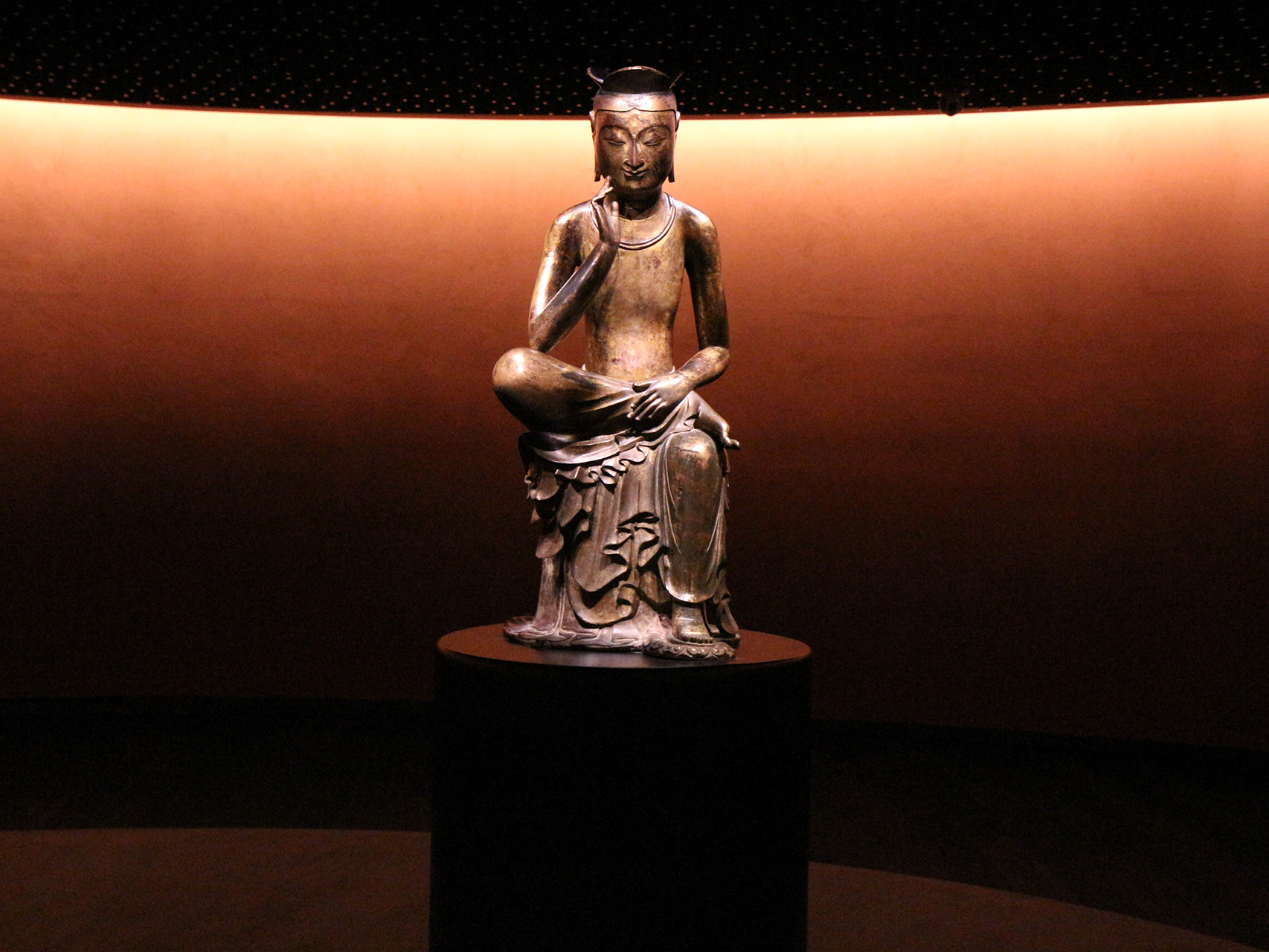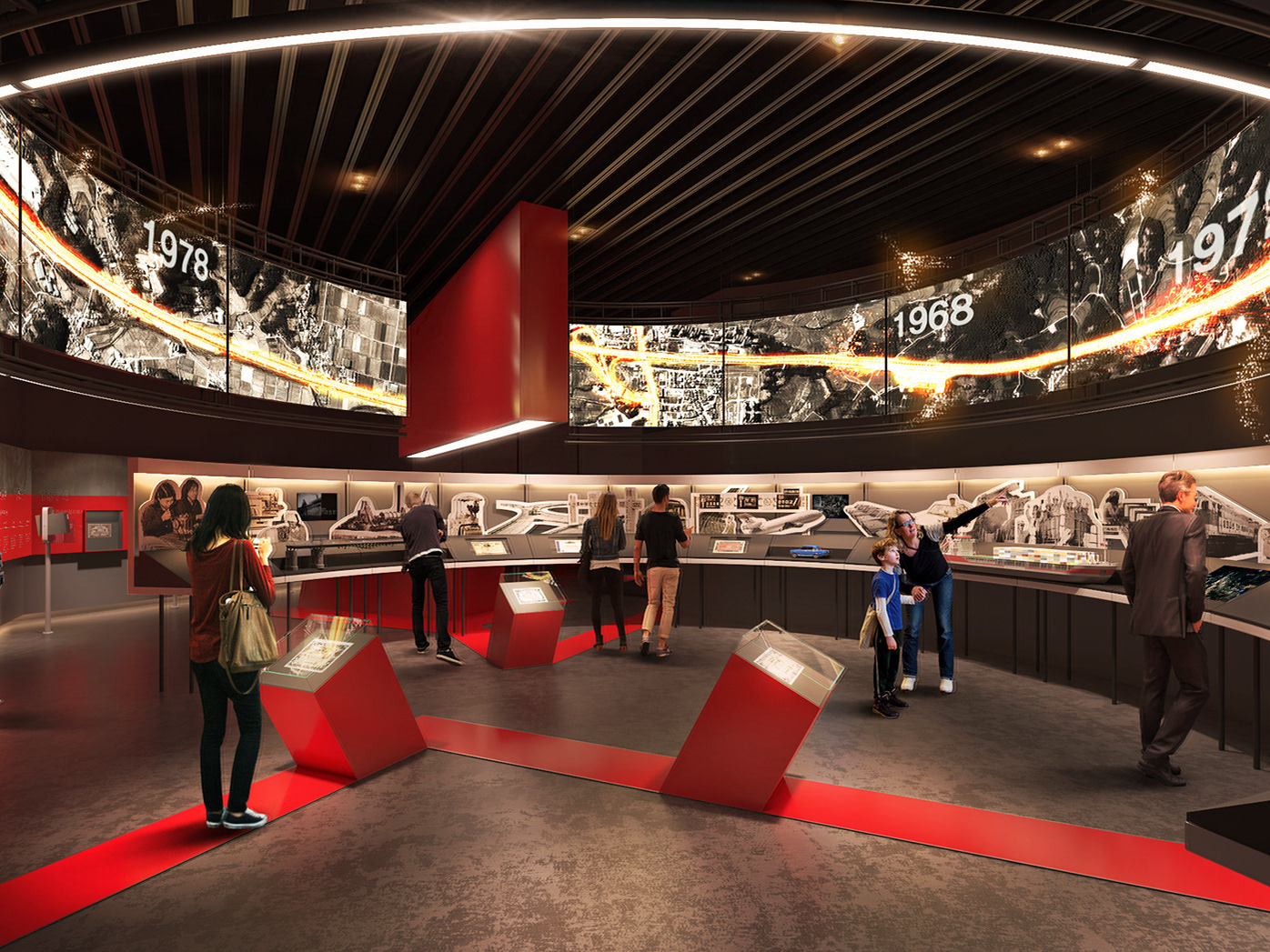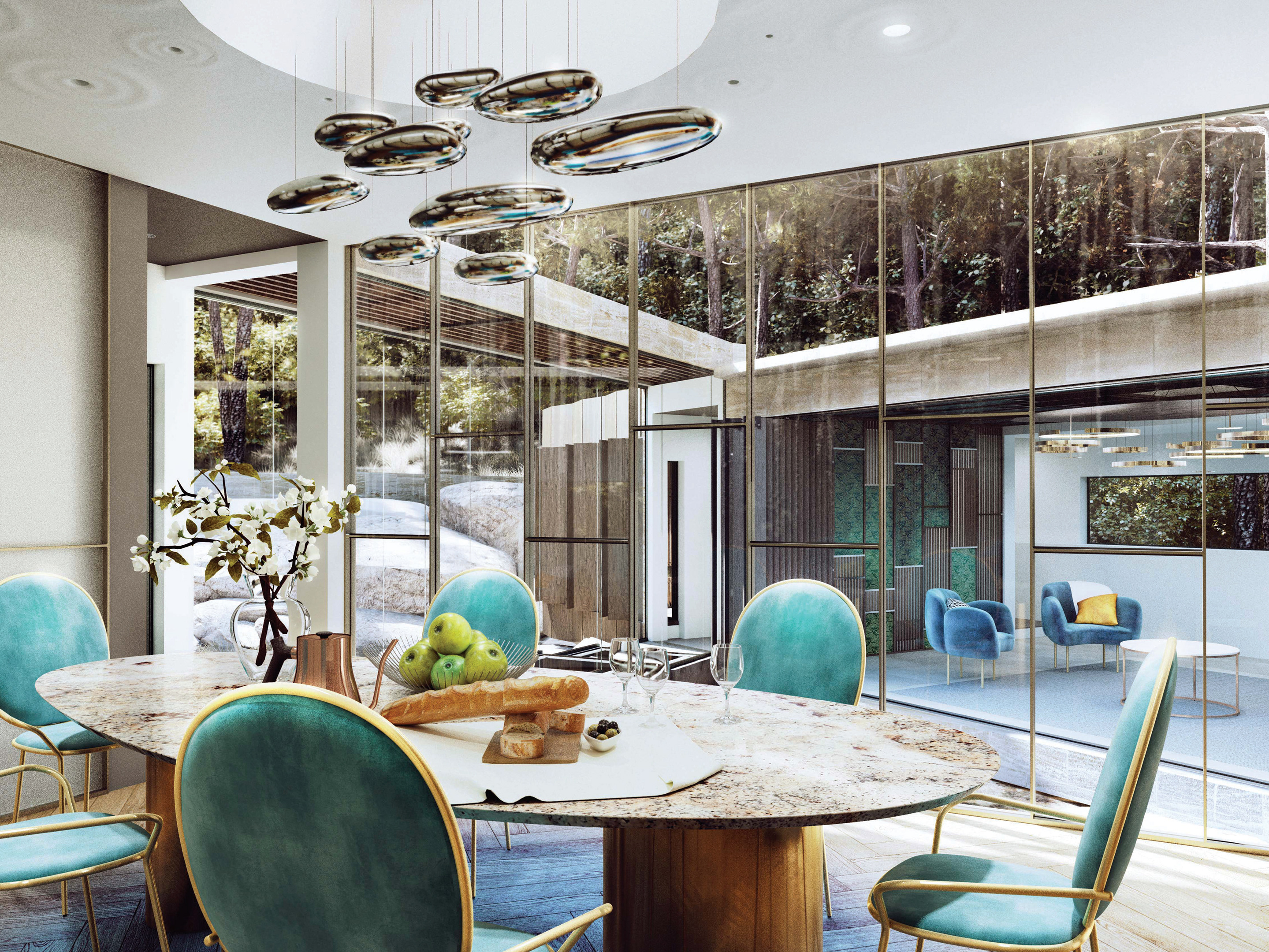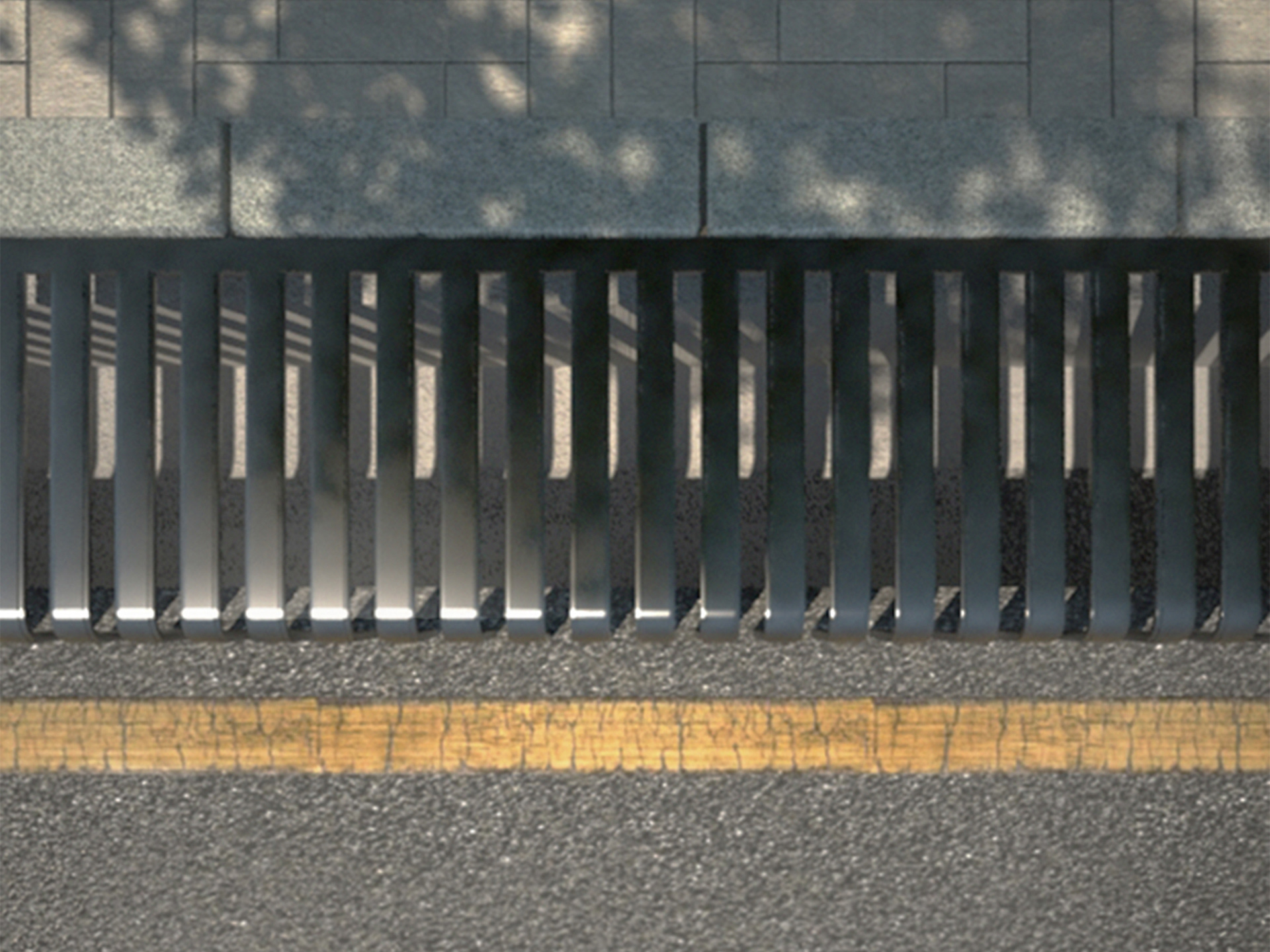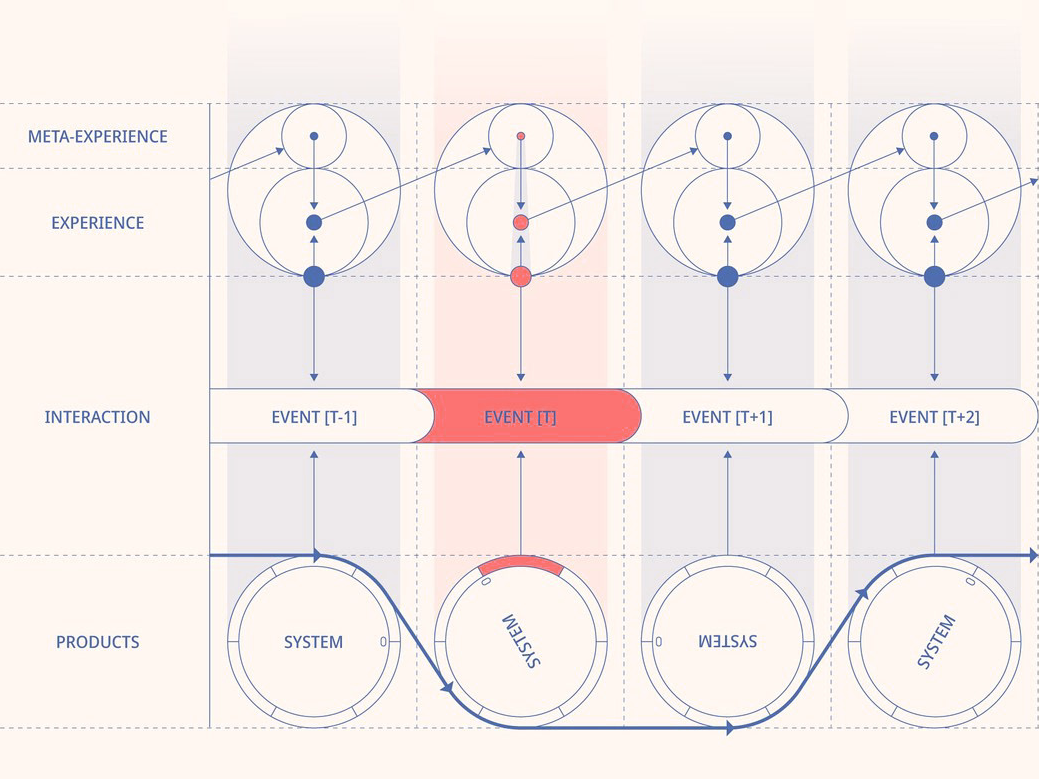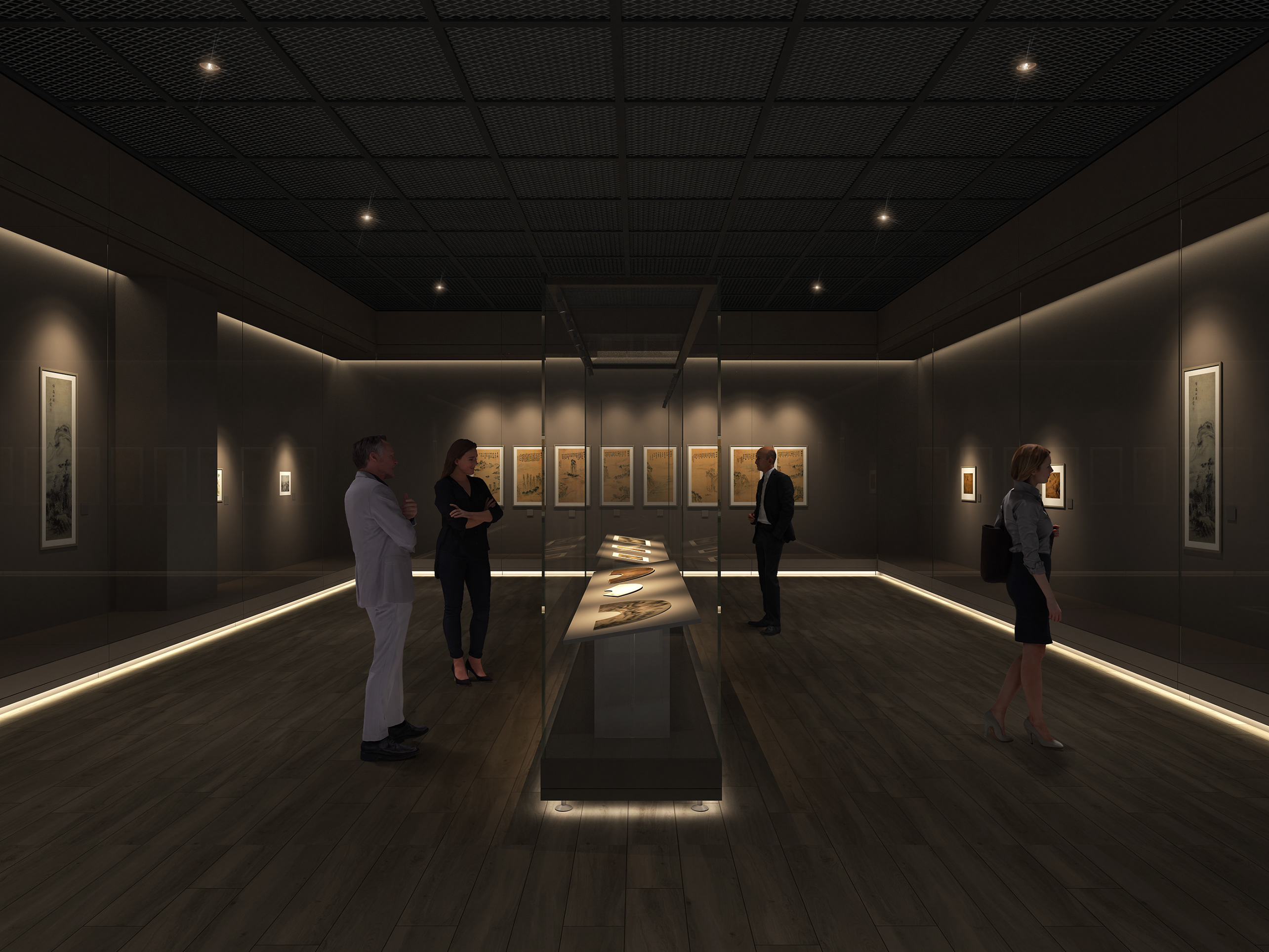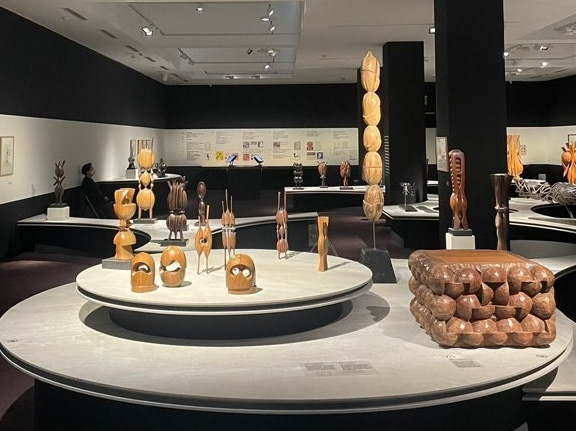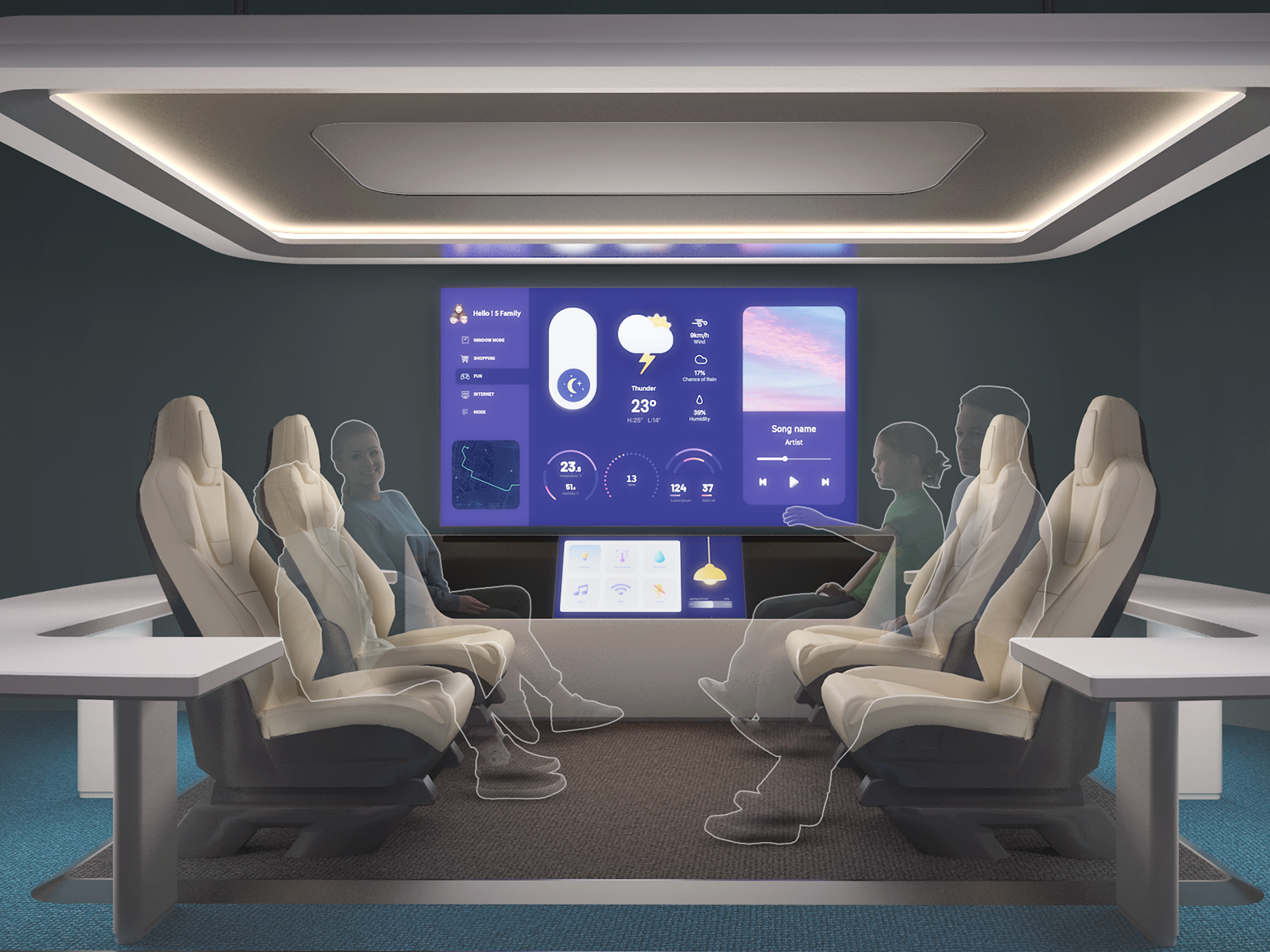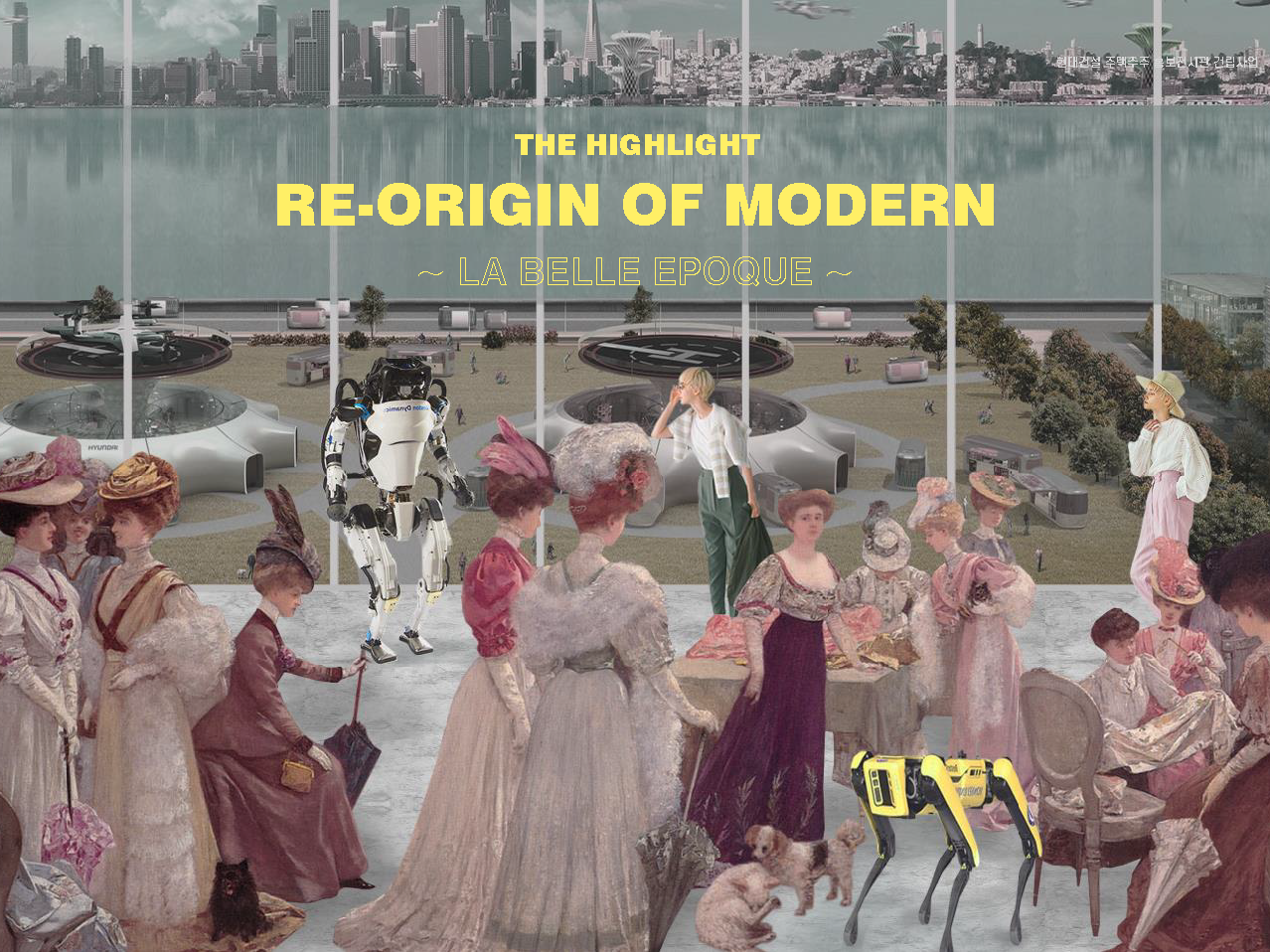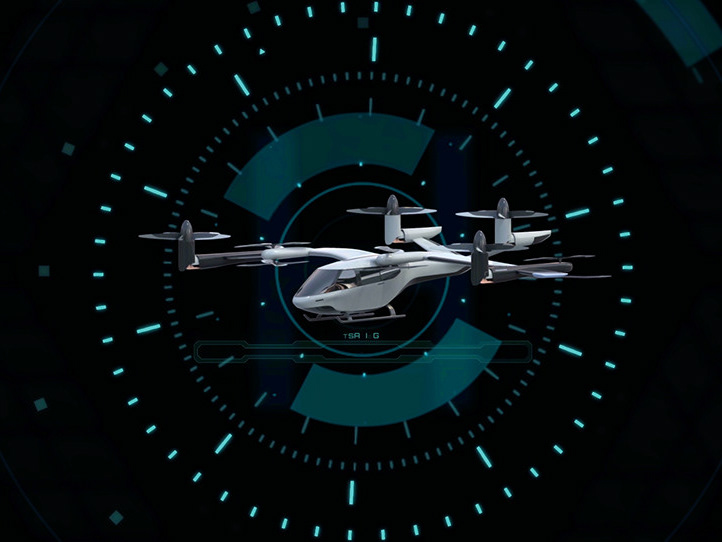The City Crisis
Cities are closely related to human society, culture, and political environment. They faced extreme changes due to technical developments after the Industrial Revolution and metropolitanization caused by population increase. These artificial environments have offered diverse opportunities and new lifestyles for humans. However, this benefit, which is derived from developments with a mechanical perspective, threatens harmony with the natural environment.
Capitalism, while making possible the forming of megacities, also brought severe side effects such as economic polarization and social imbalance. Once expected to guarantee the prosperity of human lives, human techniques are now considered hazards to both humans and the natural environment. The architectures have reflected the overheated technologies in the competition of developments and selfish genes of capital.
However, the question of coexistence is brought to the surface nowadays. How will the new ideas change this selfish gene, and what kind of form will modern architecture take as its phenotype?
Megacities and skyscrapers
Currently, where 54% of the world population lives urban-based lives, megacities of population over 100 million keep increasing. It is estimated that in the year 2050, almost 70% of people worldwide will live in cities. Skyscrapers were born from the necessity to disperse the dense complexity of horizontal cities by vertically expanding and reconstructing them to make more effective use of scarce land. Moreover, many cities and nations passionately competed to build more skyscrapers since they were often taken as outcomes of their economic success. As a result, from the year 1930, when the fever to build more skyscrapers had peaked, to the present, skyscrapers have become a common type of architecture in megacities worldwide.
20C NYC and the Empire State Building
New York, which had become modern due to the 19th century's great immigration and developments, had emerged as the new center of world industry in the early 20th century. State-of-the-art technology and highly concentrated capital have turned New York into a city of skyscrapers. The Empire State, completed in 1930, becoming the world's highest artificial structure, was imprinted into people's minds as the symbol of prosperity and a great leap towards success. This piece of architecture has visualized the harsh competing nature of capitalism itself, which is the driving force of the idea. Simultaneously, it creates a scenery that even shows the severe polarization of the capital and shabby slum streets of the city in contrast to the world's tallest building.
NYC as Megacity
As the population in the urban area continues to increase, the efficient usage of energy and resources is becoming a primary concern in 21C urban planning. The urban areas on Earth, which only account for 1% of the Earth's surface, use 75% of the total energy and are responsible for 80% of greenhouse gas emissions. It shows how the city residents are using more energy than any other area. It was found that New York City, which reached the first Megacity of more than 10 million population in 1950, uses the most excessive energy and resources among all Megacities.
Recovered Skyscraper
UN predicts that by 2050, the world population will reach over 9 billion, nearly 2 billion more than present. Cities will be overcrowded due to this population change, which makes experts believe that demand for skyscrapers will continue to increase. However, these demands contradict the social and environmental problems that will happen if Megacities like NYC continue to spend energy and resources at this rate. Thus, to satisfy these demands, we need to have a new, sustainable model for a skyscraper.
Although the 20C's skyscrapers followed the logic of development and growth, the new model should follow the law of recovery and coexistence. Currently, most of NYC's areas are already in use, so it would take a great deal of energy and resources to build a new building over entirely, like in 20C. The new model will use conventional buildings as resources, and it will grant new usage to the old buildings with only the slightest effort on building acts. The newly born buildings will use self-produced sustainable energy to co-exist with the environment instead of consuming it. With this new model, the capitals will meet a new land of shared values with the public, and the skyscrapers, once considered the symbol of polarization, will transition to the symbol of coexistence.
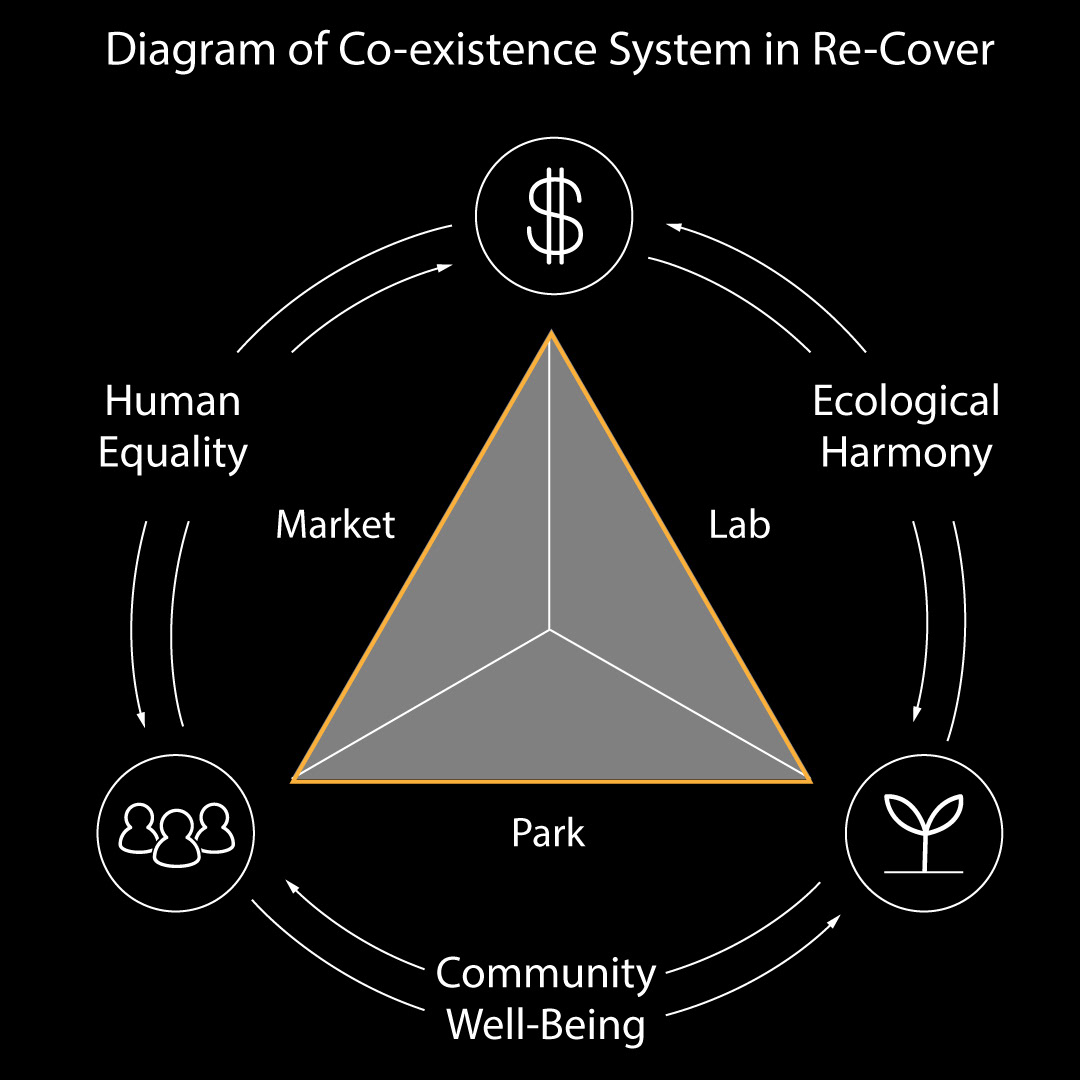
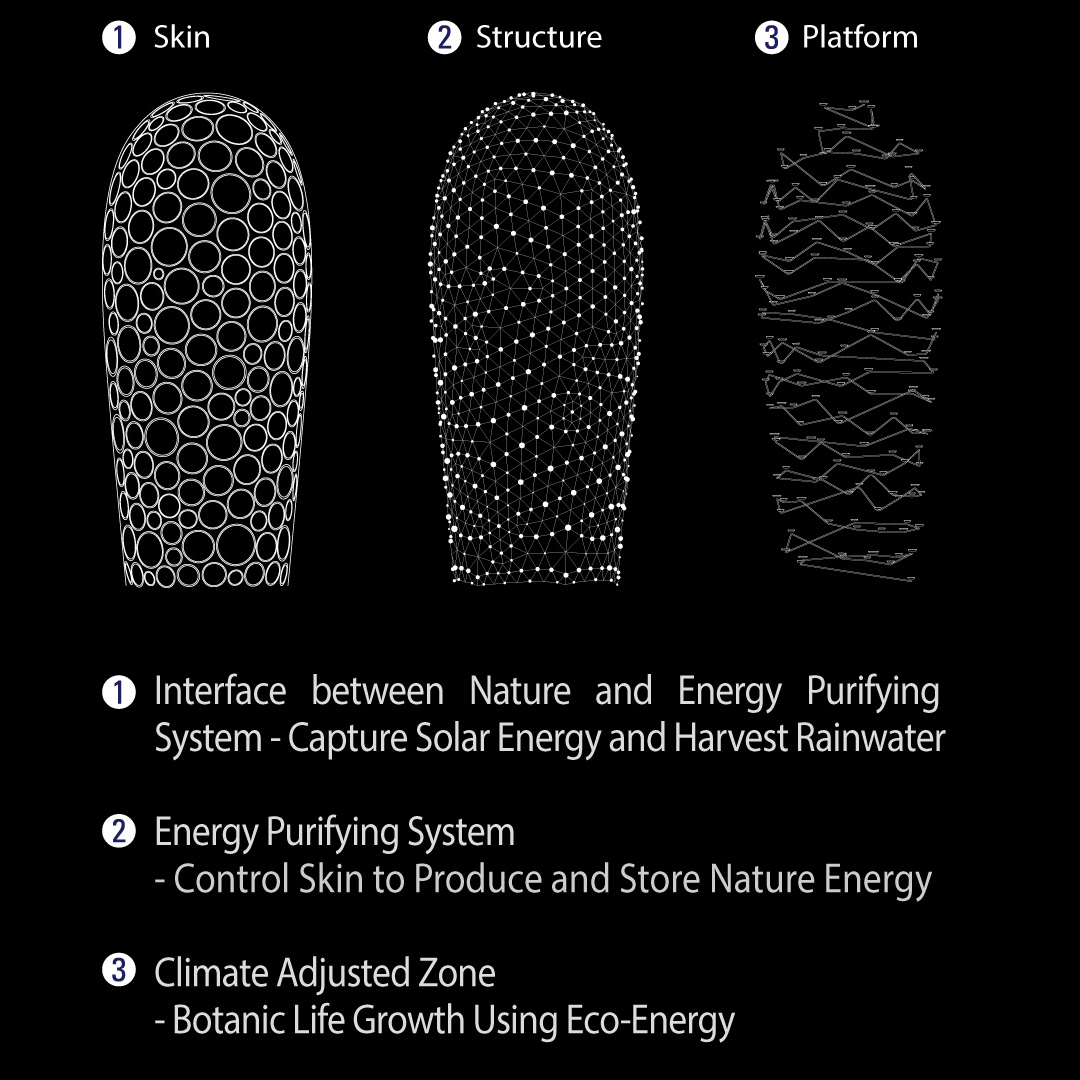
"Re-Cover" is an architectural model to achieve mutually beneficial coexistence between the capital, environment, and the public. This model grants a new function to an aged Empire State Building, and self-produces eco-friendly energy. It uses solar energy absorbed from transparent integument to optimize the greenhouse environment. Simultaneously, the rainwater harvested from the integument is also used as a resource to adjust its environment. Gardening platforms operated by this system can cultivate various plants worldwide, and they will serve as meaningful resources for research concerning the preservation of the plants.
"Re-Cover" converts energy from nature to usable energy and uses it to adjust its environment for plant growth. The Skin of "Re-Cover" is a collection of sensory devices that can recognize climate information such as humidity and temperature and use this information to adjust the inner environment. The central AI processes the weather information gathered from inner and outer sensors to manage each gardening platform.
Biochemical Corporation with Botany Lab
Companies should transition to a mutually beneficial relationship with nature from a one-way relationship in which the companies exploit nature unilaterally. In "Re-Cover," the company will invest in research for the restoration of diversity of plants. Moreover, they will use the results as necessary data for providing new services for customers and generating profits. "Re-cover" will enable companies to have optimized infrastructure for botanical research and, at the same time, have accessibility to network for enterprising efforts.
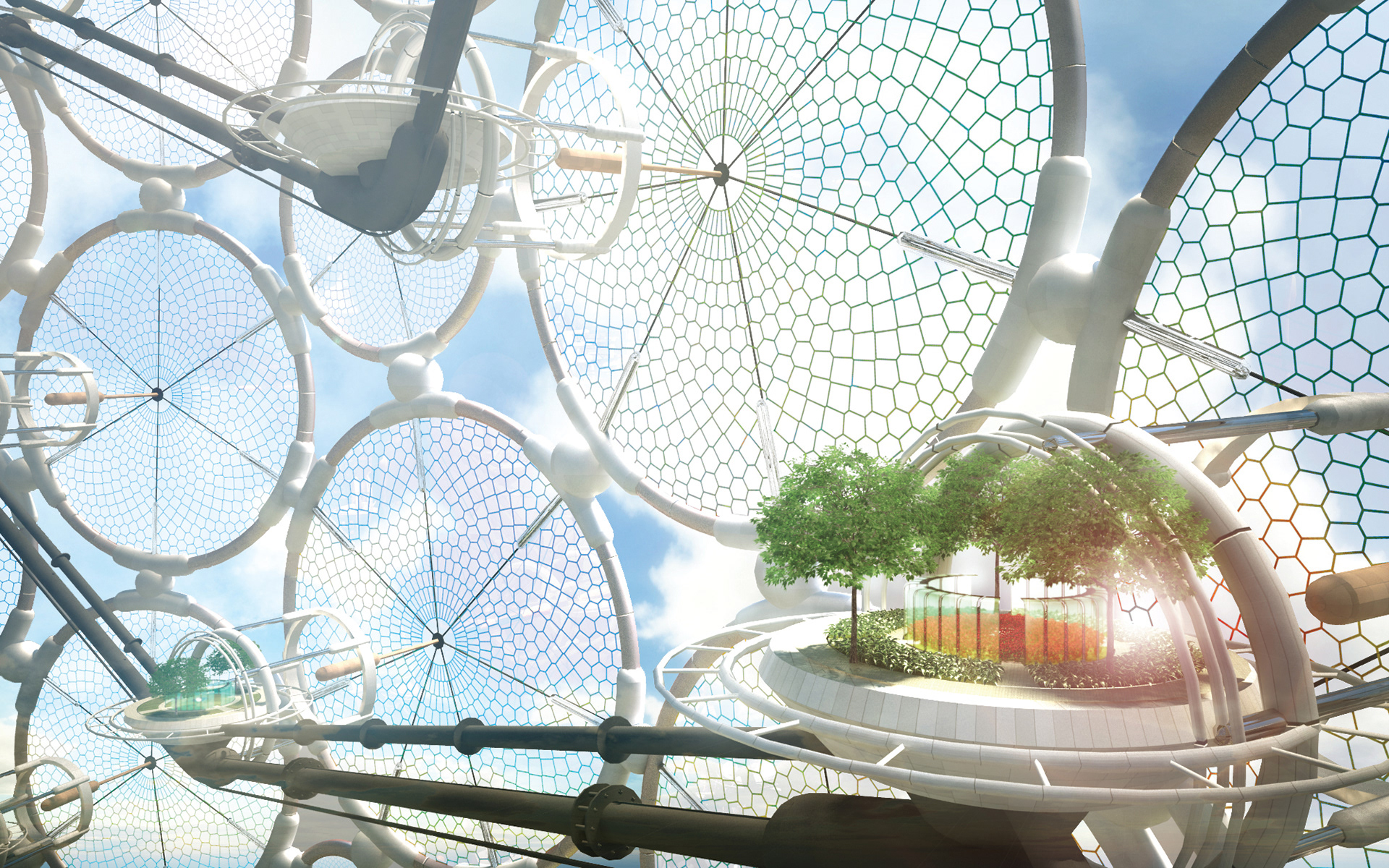
Each Island will Control Adequate Conditions for Various Plants
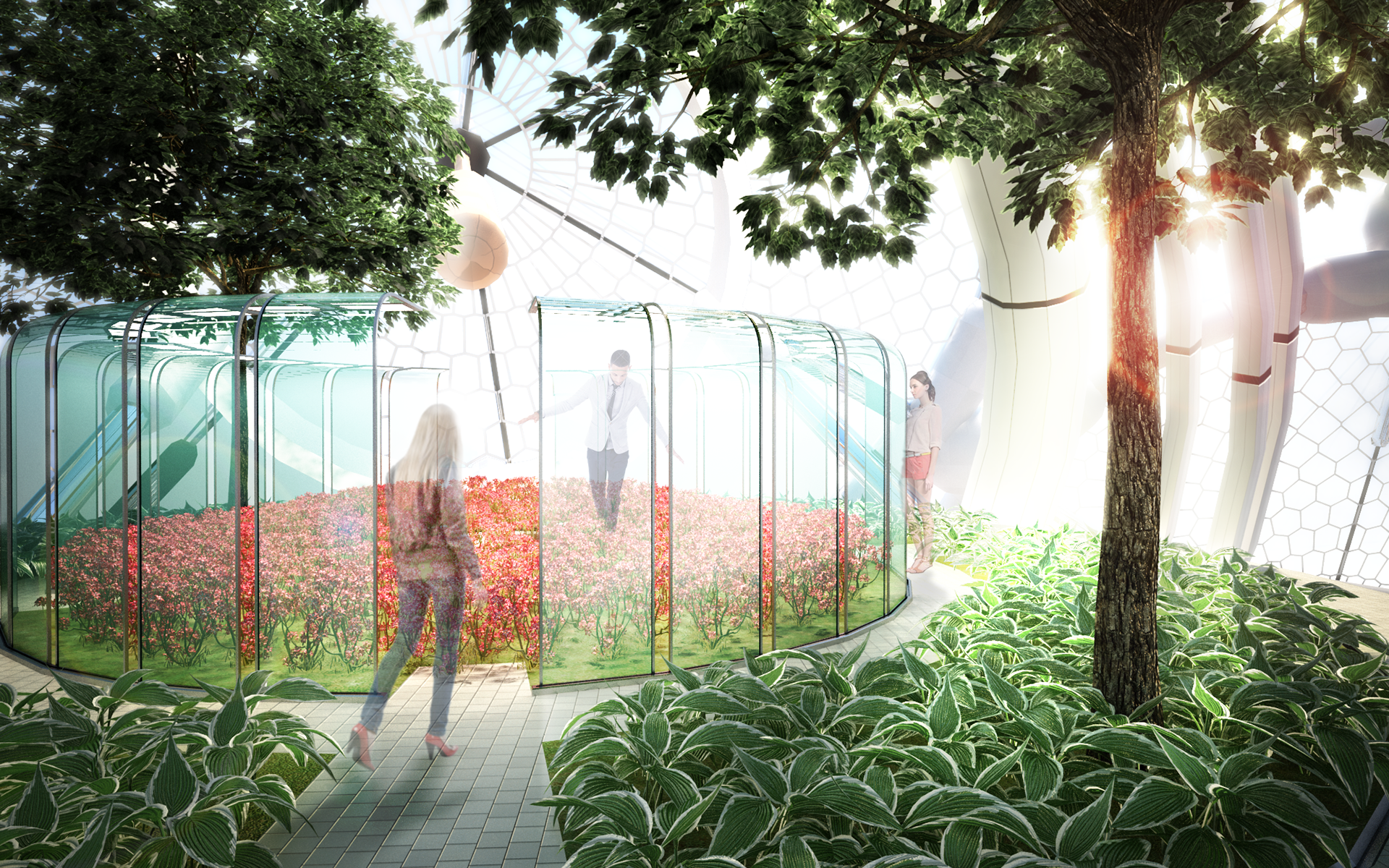
Each Greenhouse Provides Proper Environment for Plant Growth.
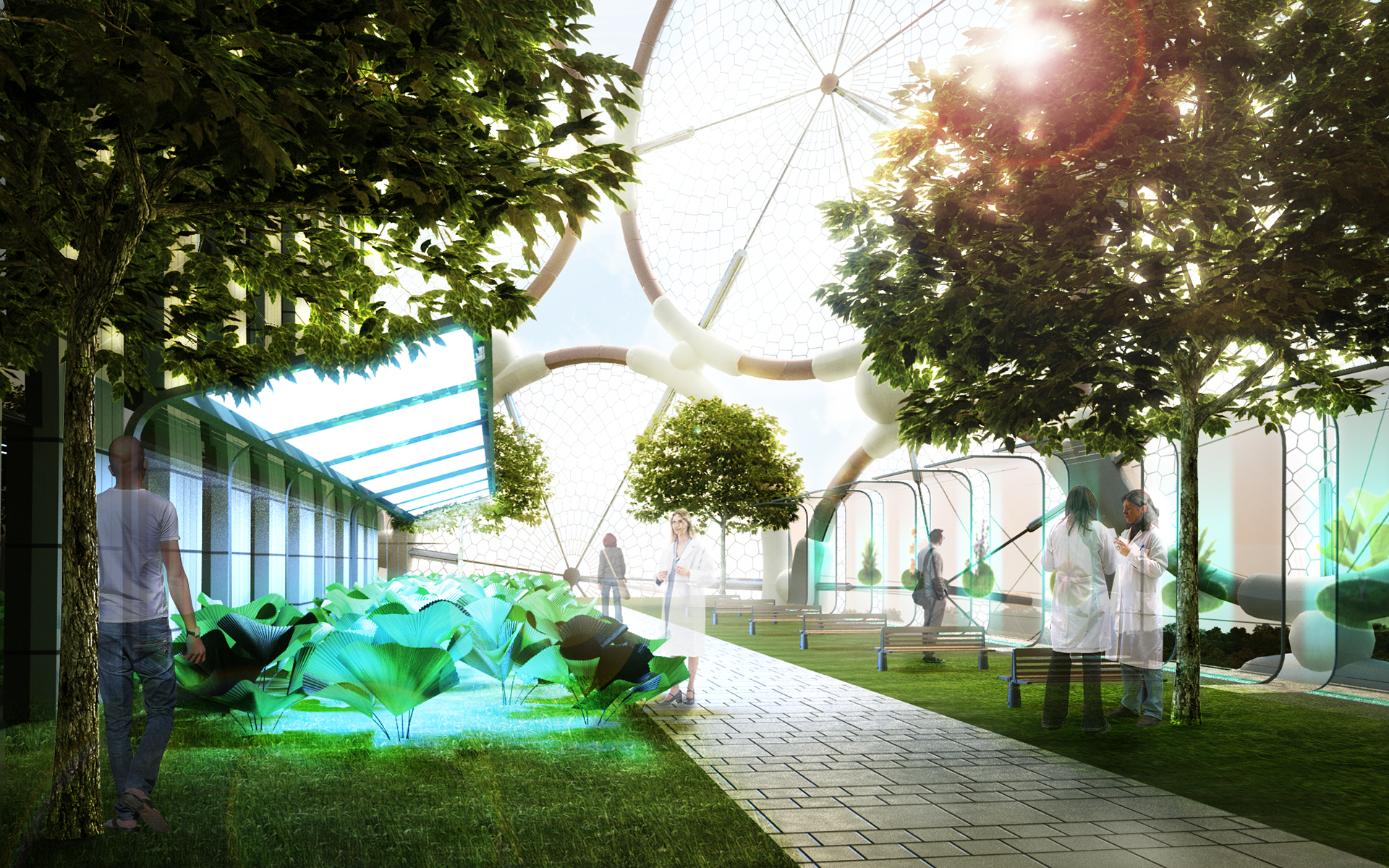
The Research Area will Serve as a Botanic Garden for the Public
Its research area will serve as a botanical garden for the public and employees. This perpendicular-structured garden will provide differentiated experiences from linear gardens of the past to NY's citizens. Research results will be posted to visitors in real-time to give awareness to the public about nature's current status.
A foundation for coexistence between the economic values of the companies and the social values of the public will be accomplished with the implementation of "Re-Cover." Companies can provide values that can be shared with other stakeholders to make a profit and stay competitive. In turn, the public can use the services and goods from the companies to provide the necessary funds for companies to engage further, thus completing the cycle of coexistence.
